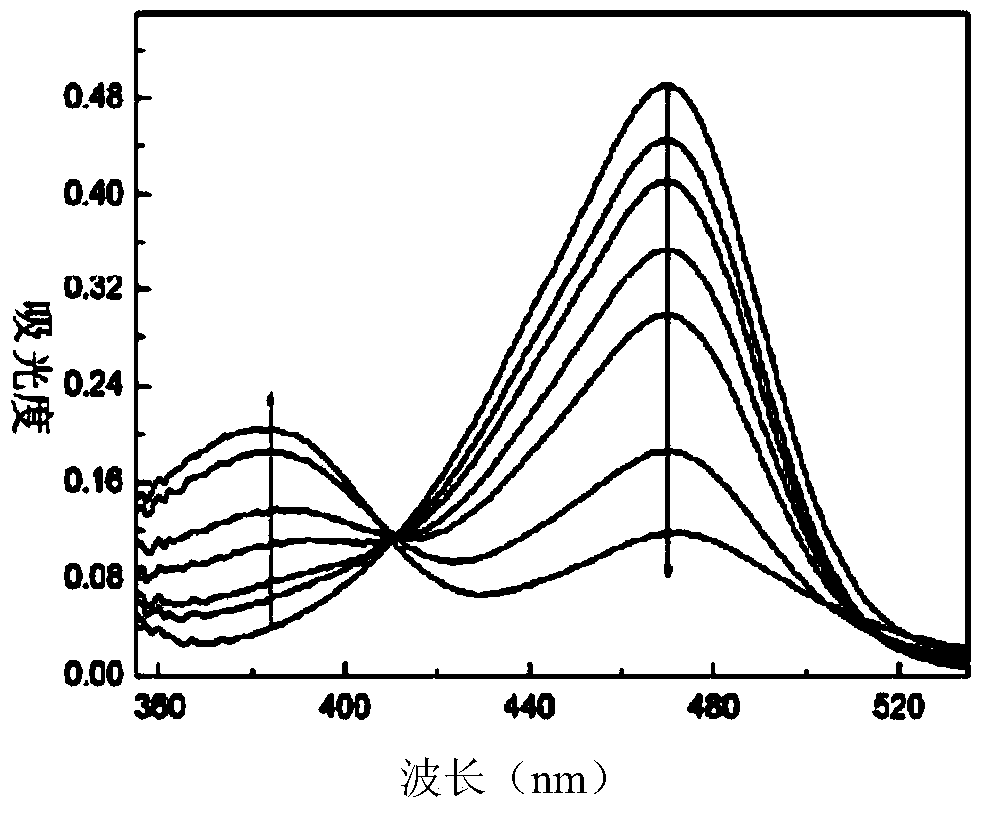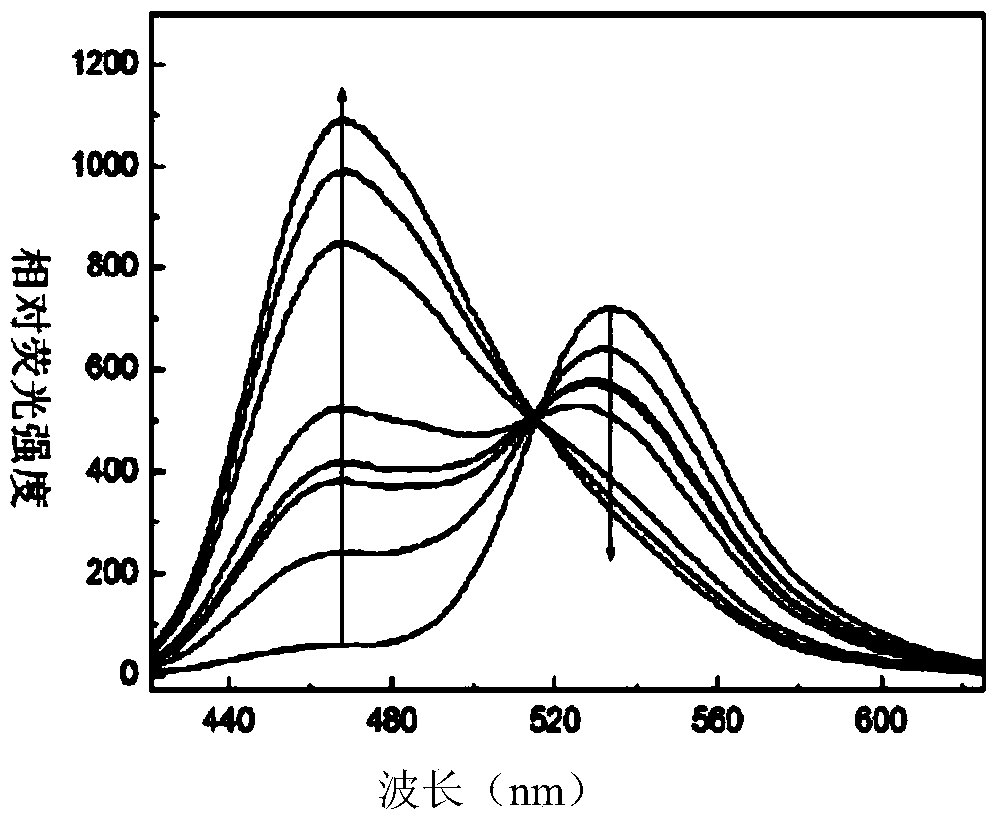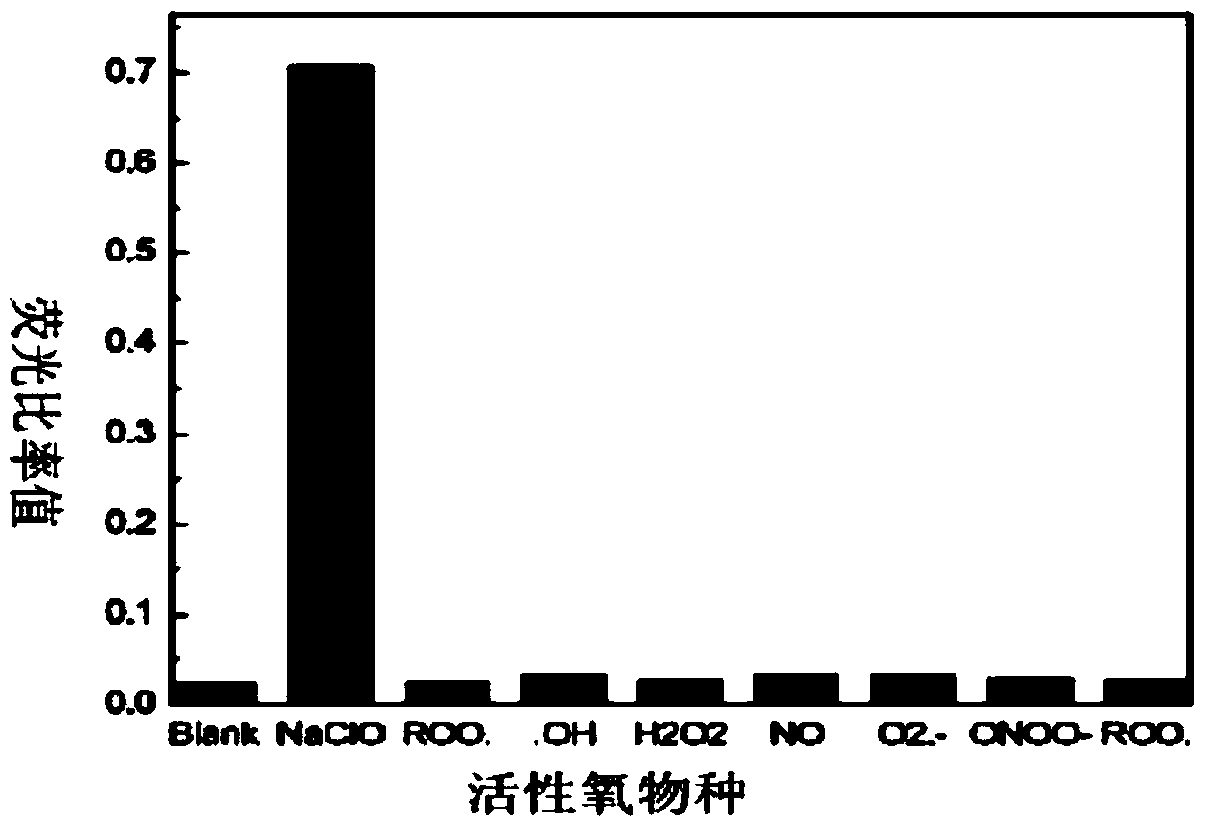Fluorescent probe for detecting hypochlorous acid by fluorescence ratio method and preparation method for fluorescent probe
A technology for the detection of hypochlorous acid and fluorescent probes, applied in the field of fluorescence detection, can solve the problems of few research reports on fluorescent ratio probes, and achieve the effect of no cytotoxicity, good cell permeability, and no light auto-oxidation
- Summary
- Abstract
- Description
- Claims
- Application Information
AI Technical Summary
Problems solved by technology
Method used
Image
Examples
Embodiment 1
[0031] Embodiment 1: the preparation method of probe:
[0032] In a 50 mL round bottom flask, add 7-dimethylamino4-methylcoumarin (0.5 g, 2.2 mmol), and dissolve it completely with 20 mL of dry benzene. Then add Lawesson's reagent (1.7g, 4.4mmol), stir, and heat to reflux under nitrogen atmosphere for 6h. After cooling, the solvent was removed under reduced pressure to obtain a yellow viscous substance. Add about 10 mL of ethyl acetate, stir for 5 min to precipitate excess Lawession reagent (white solid), pour out the solution, and remove the solvent under reduced pressure. Repeat the operation 3 times. The product was placed in a vacuum desiccator for 48 hours to obtain a yellow pure solid product (yield 75%).
[0033] Product characterization
[0034] ESI-MS:C 14 h 17 NOS,m / z:248.0(M+1) + .
[0035] NMR spectrum ( 1 H. 13 C NMR) characterization data are as follows:
[0036] 1 H NMR (CDCl 3 ): δ1.202 (t, J=6.8, 6H, NCH 2 CH 3 ), 2.271(s,3H,CH 3 ),3.412(q,J=10...
PUM
 Login to View More
Login to View More Abstract
Description
Claims
Application Information
 Login to View More
Login to View More - R&D
- Intellectual Property
- Life Sciences
- Materials
- Tech Scout
- Unparalleled Data Quality
- Higher Quality Content
- 60% Fewer Hallucinations
Browse by: Latest US Patents, China's latest patents, Technical Efficacy Thesaurus, Application Domain, Technology Topic, Popular Technical Reports.
© 2025 PatSnap. All rights reserved.Legal|Privacy policy|Modern Slavery Act Transparency Statement|Sitemap|About US| Contact US: help@patsnap.com



